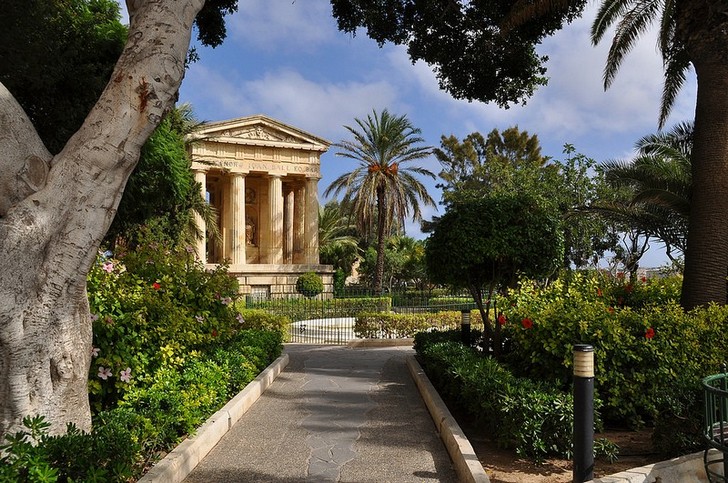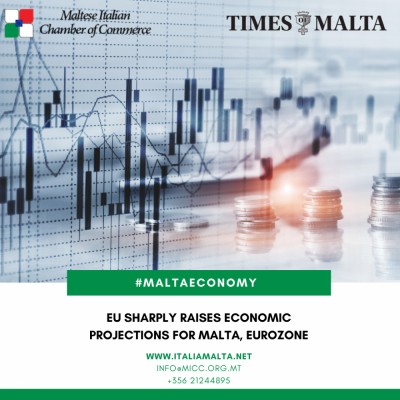In the ever-evolving landscape of global economics, the European Union (EU) remains a pivotal force. Among its many components, the euro area stands out as a critical economic bloc. However, one of the most intriguing aspects of this region is the presence of the smallest member of the Eurozone — a country that, despite its diminutive size, plays a significant role in shaping the broader economic narrative.
The smallest member of the Eurozone is Malta, a small island nation located in the central Mediterranean Sea. With a total area of 316 square kilometers (122 square miles), Malta is not only the smallest Eurozone country but also one of the smallest countries in Europe. Despite its size, Malta has managed to carve out a unique position within the EU, contributing to the economic and cultural fabric of the region.
Understanding Malta’s Role in the Eurozone
Malta joined the Eurozone on January 1, 2008, becoming the 13th member of the currency union. This move was part of a broader strategy to integrate more deeply with the European economy and enhance its competitiveness on the global stage. As a member of the Eurozone, Malta benefits from the stability and economic policies set by the European Central Bank (ECB). This alignment allows for greater trade efficiency, reduced transaction costs, and increased investor confidence.
Malta’s inclusion in the Eurozone has had several notable impacts:
-
Economic Stability: By adopting the Euro, Malta has been able to stabilize its currency, which previously fluctuated against the British pound. This stability has made it easier for businesses to plan and invest, fostering a more predictable economic environment.
-
Trade and Investment: The adoption of the Euro has facilitated trade with other Eurozone countries, reducing exchange rate risks and making it easier for Maltese businesses to operate across borders. It has also attracted foreign investment, particularly in sectors such as finance, tourism, and technology.
-
Tourism and Cultural Exchange: Malta’s rich history and cultural heritage have made it a popular tourist destination. The Eurozone membership has further enhanced its appeal, as tourists can easily navigate the region without worrying about currency conversion.
-
Political Integration: Joining the Eurozone has strengthened Malta’s ties with other EU members, reinforcing its position within the European political and economic framework. This integration has also allowed Malta to participate in EU decision-making processes, giving it a voice in shaping the future of the continent.
Malta’s Economic Profile
Despite its small size, Malta has a robust and diversified economy. Key sectors include:
-
Tourism: Malta is a top destination in the Mediterranean, attracting millions of visitors each year. Its historic sites, such as the capital city of Valletta, and its beautiful coastline make it a prime location for both leisure and cultural tourism.
-
Financial Services: Malta has developed a strong financial sector, offering services such as banking, insurance, and investment management. The country has also become a hub for online gaming and digital services, thanks to its favorable regulatory environment.
-
Manufacturing and Industry: Malta has a growing manufacturing sector, with industries ranging from food production to electronics. The country has also invested in renewable energy, aiming to reduce its carbon footprint and promote sustainable development.
-
Education and Research: Malta has a well-developed education system, with several universities and research institutions. The country has also established itself as a center for medical tourism, attracting patients from across Europe.
Challenges and Opportunities
While Malta’s membership in the Eurozone has brought numerous benefits, it also presents challenges. One of the primary concerns is the country’s vulnerability to external shocks, such as economic downturns or changes in global markets. Additionally, Malta’s small population and limited natural resources require careful planning and strategic investments to ensure long-term sustainability.
However, these challenges also present opportunities. Malta’s small size allows for agile policy-making and quick adaptation to changing circumstances. The country has also leveraged its strategic location to become a key player in regional cooperation and international partnerships.
Malta’s Global Influence
Although Malta may be the smallest member of the Eurozone, its influence extends beyond its borders. The country has played an active role in EU politics, advocating for issues such as migration, security, and environmental protection. Malta has also been involved in various international organizations, including the United Nations and the World Trade Organization.
In addition, Malta’s cultural and historical significance has made it a symbol of resilience and adaptability. The country’s ability to thrive in a competitive global market while maintaining its unique identity is a testament to its strength and determination.
Conclusion
Malta, the smallest member of the Eurozone, may be small in size, but it is mighty in impact. From its economic contributions to its cultural richness, Malta has proven that even the tiniest nations can play a significant role in shaping the global landscape. As the Eurozone continues to evolve, Malta’s position as a key player will remain crucial, ensuring that its voice is heard and its contributions are recognized.















More Stories
US Trending News: How to Claim Your Joy: A Guide to Finding Happiness and Inner Peace
US Trending News: Explore Www.hobbylobby.com: Your Ultimate Guide to the Official Site
When Is Trick Or Treating in 2024: A Complete Guide for Halloween